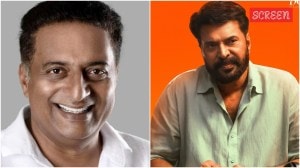Reddy’s prescription for the credit fever
“If I aim for high growth and high inflation, I am sunk. I will not be politically in trouble if my growth rate slows down...

“If I aim for high growth and high inflation, I am sunk. I will not be politically in trouble if my growth rate slows down to 8.5 to 8 per cent. I will be in greater trouble if my inflation rises to 6 per cent this year.” finance minister P Chidambaram at Davos on January 25.
Four days later, RBI governor Y V Reddy effectively told Chidambaram: “I won’t let you sink.” By doing nothing in the third quarter review of annual monetary policy for 2007-08, Reddy has changed RBI’s currency, from economics to politics. In a country that’s barely begun to understand the macroeconomic, strategic, financial and, of course, political implications of growth, Reddy’s prescription this quarter is once again yesterday’s pill.
Just what has Reddy done? In a word: Nothing. True, balancing growth and inflation, currency and credit is not easy in these times when volatility is high not only in financial markets but in the global flow as well. As a result, by leaving all monetary indicators — CRR, repo, reverse repo and bank rate — unchanged, Reddy’s inflation focus, borrowed from finance minister in particular and the Manmohan Singh administration in general, has taken the pride of place.
In English that means: interest rates on home loans, car loans, consumer loans, personal loans will remain where they are. It means entrepreneurs, particularly smaller ones, will continue to pay high interest rates on money borrowed to run enterprises. It probably means debt-backed new enterprises will pause for breath. Which implies that growth rate of new jobs will slow down. Which finally means, the markets, reeling from a US downturn will have nothing to look up to here.
Not without reason, though. In very simple terms, beyond the affluent and middle classes that add up to 200-250 million strong and growing in huge chunk, lies about 75-80 per cent of India which has not tasted the fruits of 9 per cent growth. Yet.
Trickle down takes time, and the cost of this time delay could be anything from riots to terrorist groupings. So, administratively as well as politically, keeping inflation under check becomes a greater concern than growth.
We are going to see a repeat performance of the growth movie this inflation on February 28, when the UPA administration presents its fourth budget. Reddy’s inflation skewed statement today is the answer to a question that Chidambaram will be addressing next month — which is better: 4 per cent inflation and 8 per cent GDP growth or 5 per cent inflation and 10 per cent growth? Better, in this case meaning ‘which option will keep the vote banks intact?’, not ‘which option will cheer the markets more?’.
As far as markets go, they mirrored Reddy’s flat signal, falling an insignificant 0.3 per cent, after a highly volatile week. No fear, politics says: only 6.3 per cent of financial savings go to the market, according to RBI’s annual report. This 6.3 per cent comprises 7 million account holders. At 0.6 per cent, they are politically insignificant.
More important, it is the poor who vote, not the wealthy. Inflation hurts the poor more. As you move up the economic food chain, food as a percentage of total income fall to levels that don’t hurt. On the other hand, food inflation bleeds the poor; besides, it is like UPA giving NDA an agenda plank in a penultimate election year.
With Reddy’s politically correct policy and even UPA giving him the moral support, what’s lost in translation is something invaluable: growth. While cheap food is important to nurse vote banks, there is another factor that the government is probably ignoring — employment. Which, when looked beyond the 100-day, corruption-ridden National Rural Employment Guarantee scheme, means industrial growth, which in turn needs inexpensive money.
To say that the state should take care of the poor through subsidies sounds very good and is all very well as far as wealth distribution is concerned. But before this distribution, spare a thought for wealth creation. Perhaps both — high growth and low inflation — have to move together.
For an economy that’s just about coming to terms with wealth creation, this is probably the wrong time to apply the brakes.



- 01
- 02
- 03
- 04
- 05




























